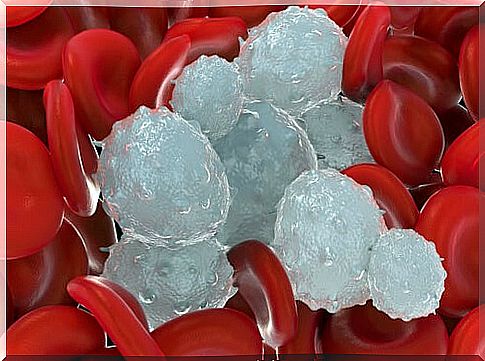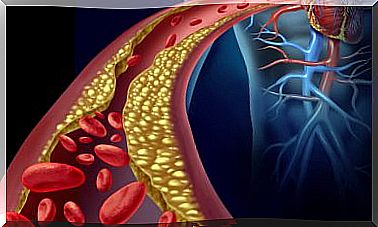Hematological Diseases: Everything You Need To Know
There are a large number of hematological diseases, some of which are relatively common, while others are very rare. In all of them there is some type of abnormality in the production of blood or some of its components.
Most of them can appear at any age, and almost all of them turn into serious health problems if they are not treated in time. We will see immediately which are the main hematological diseases, according to their most conventional classification.
Anemias
One of the most common hematological diseases is anemia, although we should really talk about anemias, since there are several types. The common thing in all of them is that there is a hemoglobin concentration below normal.
The main types of anemia are:
- Iron deficiency: it is a type of anemia that occurs due to iron deficiency, which is necessary for the formation of hemoglobin. It is the most common modality.
- Megaloblastic: It is also called “vitamin deficiency anemia” and is a disease that consists of the deformity and enlargement of red blood cells. It originates because the level of some vitamins are below normal.
- Hemolytic: is a group of disorders in which red blood cells break down at a faster rate than the rate of production of new cells of this type.
- Aplastic: it is one of the rare hematological diseases, in which the body is not able to produce the necessary amount of red blood cells from the bone marrow.
- Fanconi anemia: is a rare hereditary disease characterized by bone marrow failure, congenital malformations and a tendency to develop solid or blood tumors.

Leukemia: one of the most serious hematological diseases
Leukemia is one of the most serious hematological diseases, as it is a type of blood cancer. This is formed in the bone marrow and leads to an uncontrollable increase in white blood cells. Cancer cells prevent healthy red blood cells, platelets, and white blood cells from being made.
The main types of leukemia are:
- Acute lymphocytic leukemia (ALL): This is a rapidly progressive type of leukemia in which there is a proliferation of a type of white blood cell called lymphocytes or lymphoblasts. It is the most common type in children.
- Acute myelogenous leukemia (AML) is a rapidly progressive leukemia that affects myeloid cells, which are a type of white blood cell that must become mature white blood cells, red blood cells, or platelets.
- Chronic lymphocytic leukemia (CLL): has basically the same characteristics as acute lymphocytic leukemia, but its progression is slow. It is more common in older adults.
- Chronic myelogenous leukemia (CML): similar to acute myelogenous leukemia, but very slow in progression. It is the form of leukemia with the best prognosis.
- Hairy cell leukemia: It is characterized by an excessive production of B cells, which appear under the microscope as if they have hairs.
Lymphomas
Lymphomas are a type of cancer in which there is an indiscriminate proliferation of lymphocytes. In other words, they increase the defensive cells of the immune system. It also arises if the lymphocytes don’t die when they should. This usually occurs in the lymph nodes, but it can also happen in the liver or spleen.
There are more than 60 varieties of this type of hematological diseases, but for practical purposes they have been classified mainly into two groups:
- Hodgkin lymphoma: is a cancer of the lymphatic system in which there is an abnormal growth and spread of cells. It corresponds to 22% of all lymphoma cases and is most common in people between the ages of 20 and 40.
- Non-Hodgkin Lymphoma: This is a lymphatic cancer in which tumors form from lymphocytes, which are a type of white blood cell. It corresponds to the most frequent group of lymphomas.
Multiple myeloma
This is a type of tumor of the lymphatic system that is characterized by the proliferation of plasma cells. These cells are responsible for producing the antibodies that protect the body from infections and foreign bodies.
Plasma cells are found in the bone marrow. The normal thing is that they multiply to fight a foreign agent and when this disappears, the proliferation ceases. When there is multiple myeloma, cells keep growing and accumulating, continually producing the same antibody in a larger than normal volume.
Myeloma can be symptomatic or asymptomatic. It mainly affects older adults, but it can appear from the age of 40. Its cause is unknown.

Other hematologic diseases
There are other hematological diseases with a lower prevalence than those already mentioned. Within them we find the following:
- Hemochromatosis: There is an excessive absorption of iron that leads to several serious diseases.
- Prothrombic coagulation disorders: it is a platelet disorder that generates excess clotting.
- Bleeding from disorders: There are abnormalities in coagulation, leading to continuous bleeding.
- Chronic myeloproliferative syndromes: comprises several diseases in which there is uncontrolled growth of bone marrow cells.
- Myelodysplastic syndromes: correspond to a group of cancers in which the blood cells of the bone marrow fail to mature or do not produce healthy blood cells.
- Porphyrias: a group of diseases in which there is an accumulation of various substances that produce porphyrin.
How to detect a hematological disease?
Hematological diseases are detectable. It’s important to see a doctor if you have suspicious symptoms or a family history. It is also essential to carry out the routine check-ups that are indicated in childhood and in adulthood to find alterations before the diseases are installed.









